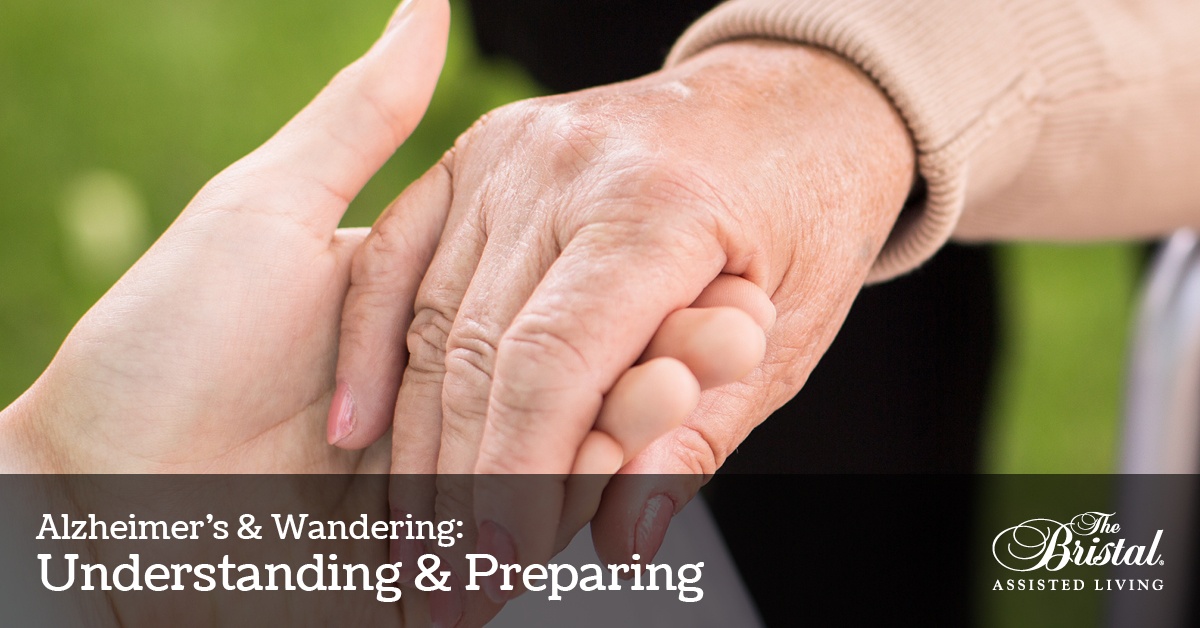Researchers believe wandering is linked to the person’s inability to communicate their needs. If you are the adult child or caregiver for a senior loved one with Alzheimer’s disease, wandering is probably one of the behaviors that keep you up at night worrying. You have no doubt heard stories about caregivers turning their back only for a minute to answer the phone. When they turned back, their loved had vanished. Despite caregivers’ best efforts, experts from the Alzheimer’s Association estimate that six in ten people who have the disease will wander. Just as troubling are the statistics that show if a person wanders even one time, they are more likely to continue the behavior.
While researchers still aren’t certain what causes someone with Alzheimer’s disease to wander, they do have some strong theories.
What Causes Alzheimer’s Wandering?
In general, dementia researchers believe wandering is linked to the person’s inability to communicate their needs and to the confusion created by memory loss. For example, someone with advanced Alzheimer’s disease may not recognize their current home as the place where they belong. It can result in the need to look for and find their way “home.” For them, the home they might be remembering is the house they lived in decades ago. Wandering might also occur when they are hungry, thirsty, in pain or need to use the restroom. Because the disease robs people of their ability to communicate, they try to find what they need on their own.
5 Tips to Decrease an Aging Loved One’s Risk for Wandering
What can you do to try to decrease the odds that your aging family member will be one of the six in ten people who wander? Here are a few suggestions that might help:
1. Space to Pace: Agitation is common among those with Alzheimer’s disease. It often leads to pacing. Give the senior a safe path to pace indoors. Pack up throw rugs, get rid of extension cords and clean up the clutter. It may help keep them from trying to find an exit if they have room to roam inside.
2. Hide the Leaving Cues: These are the items you commonly reach for as you are heading out the door. Common ones include your car keys, coat, purse, and umbrella. While it is convenient to keep them close to the door, they may send a cue to someone with Alzheimer’s that an exit door is near. Instead, store them out-of-sight in a cabinet or closet.
3. Disguise Exit Doors: Another way to keep your senior loved one from trying to make an exit is to paint the interior side of exit doors and door knobs the same color as the walls. It makes them harder to distinguish and less likely to attract attention.
4. Use Universal Signs: You might also try placing universal signs such as STOP or DO NOT ENTER on the inside of exterior doors. People with Alzheimer’s are typically able to recognize these cues even in the later stages of the disease.
5. Monitor Basic Needs: Many researchers believe wandering is caused by the need for food, water or the restroom. Because people living with Alzheimer’s disease often have impaired verbal abilities, they aren’t able to communicate what they need so they take off in search of it. Show them to the bathroom throughout the day and take them to the kitchen and offer them food and water. It may be just what they need.
Despite your best attempts at prevention, you may still find yourself dealing with the very frightening situation of a missing family member. One of the best ways to help law enforcement quickly launch a search is by putting together an Alzheimer’s Wandering Kit today.
How to Create an Alzheimer’s Wandering Kit
In the event your loved one wanders, quickly providing emergency responders and the media with the information they need can make all the difference in the world in getting them home safely.
Here is a list of what your Alzheimer’s Wandering Kit should include:
1. A written physical description of your senior loved one. Include their height, weight, eye color, hair color, and any identifying marks or features like a tattoo or scar.
2. Have a list of at least three family or friends that can be emergency contact people in case your loved one is in need of medical intervention when they are found. Include work, home and cell phone numbers.
3. Have recent photos of your loved one in the kit. Keeping hard copies and digital versions of the photos is ideal. It is important that the pictures be of good quality so they can be clearly photocopied for flyers. Be sure to update the photos as your loved one’s appearance changes. A few seconds of video that clearly shows your loved one’s face will also make it easier for media to alert the public.
4. Make sure your kit has a copy of your loved one’s complete medical file. You need their medical history, known health problems, allergies and medications they take. Also include their physician’s name and contact information
5. Create a list of places and addresses familiar to your family member. It might give authorities a starting point for their search. Places to include might be adult children’s homes, your senior loved one’s past residences, former employers, favorite clubs, and their church or synagogue.
6. If your aging family member still drives, be sure you have a photo and description of their car including the license plate number, make, model and year. This will make it easier for law enforcement to alert authorities in surrounding cities and towns to be on the lookout for their vehicle.
One final piece of advice is to have multiple copies of your Alzheimer’s Wandering Kit stored in an easily accessible location. Email a digital copy of your Alzheimer’s Wandering Kit to friends and family members just in case you aren’t around when an emergency occurs.



